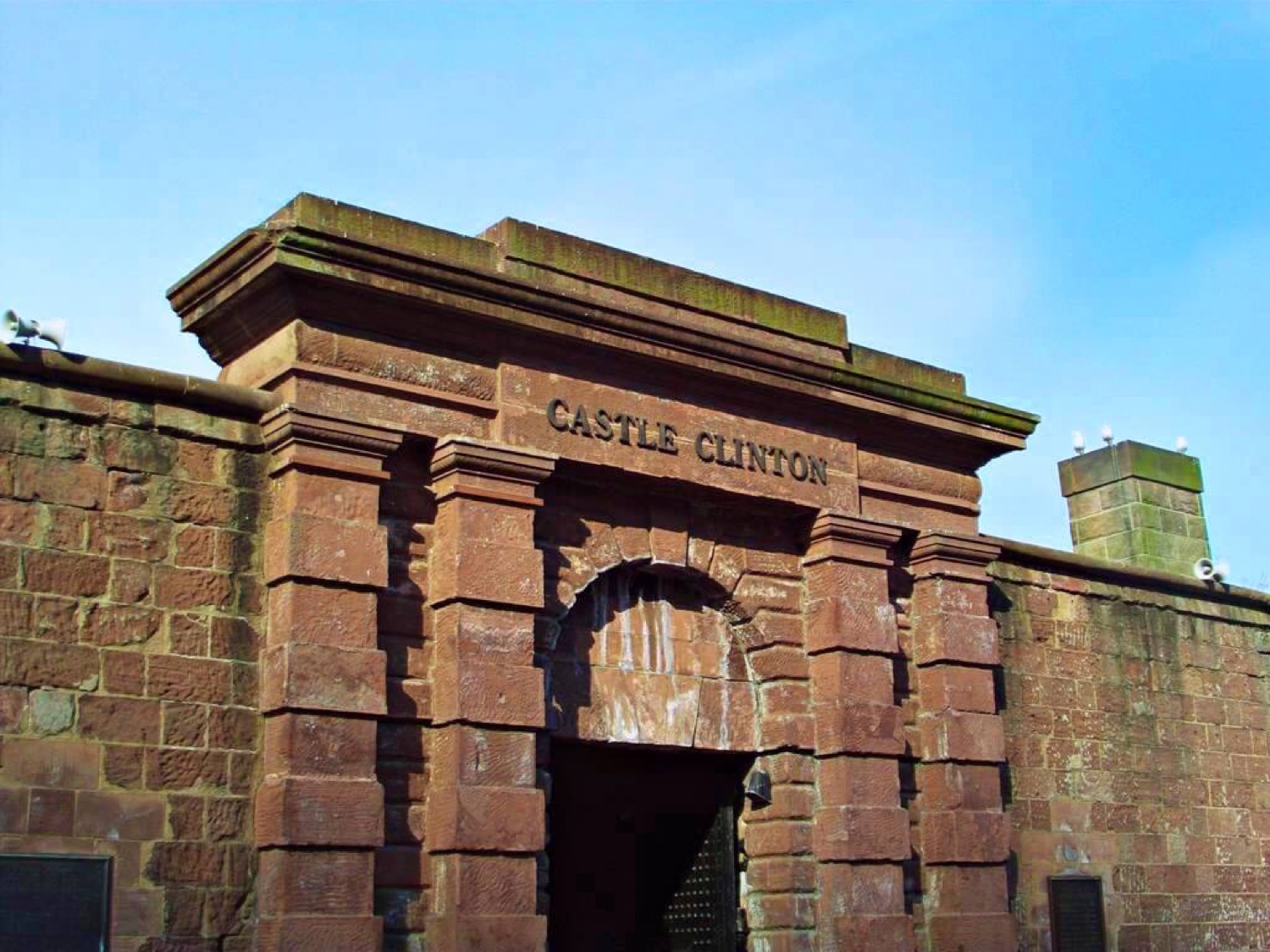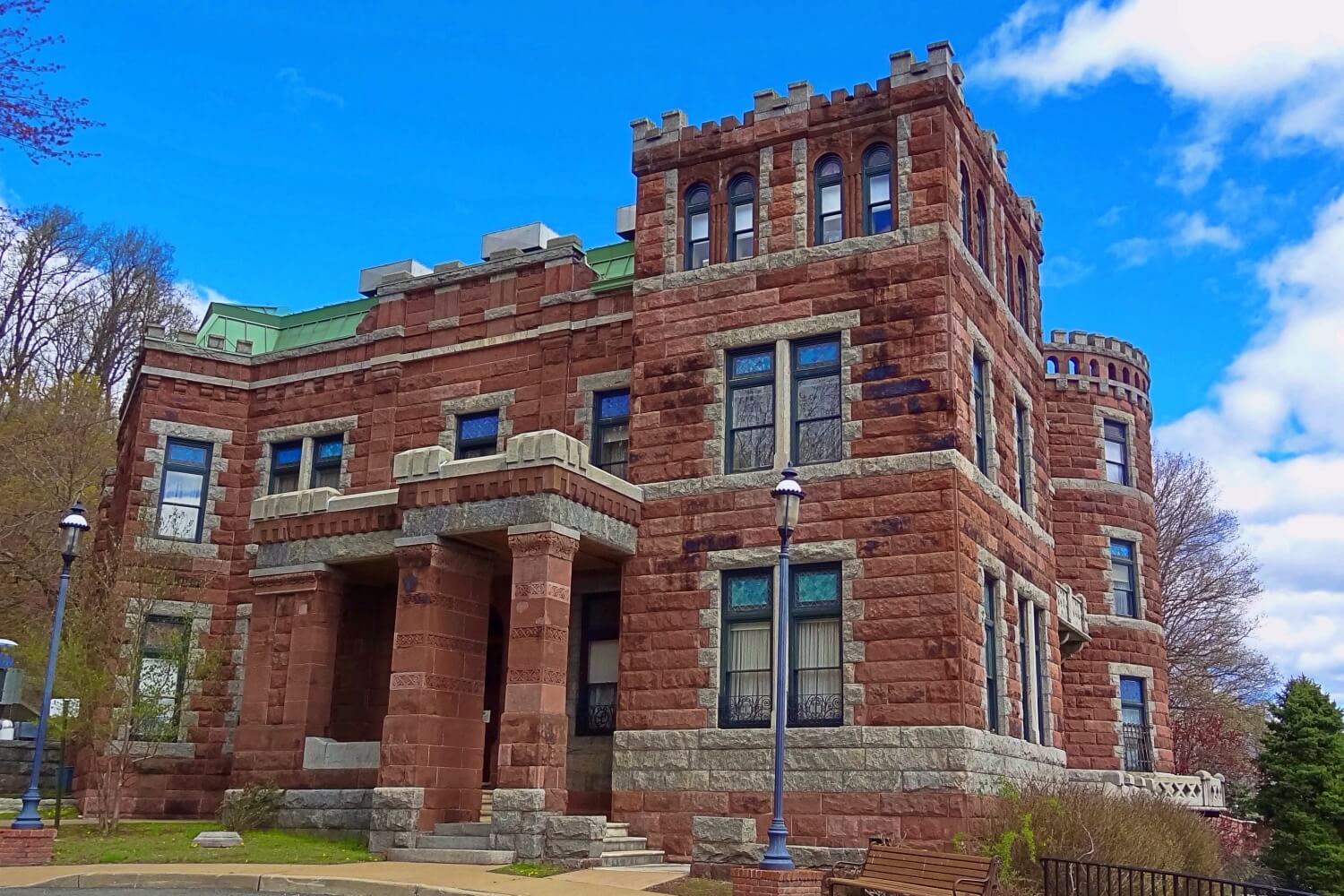The Met Cloisters
New York County New York Unites States
castle, chateau
The Cloisters, also known as the Met Cloisters, is a museum in Fort Tryon Park in Washington Heights, Manhattan, New York City, specializing in European medieval art and architecture, with a focus on the Romanesque and Gothic periods
Previous names
The Met Cloisters
Description
The Cloisters, also known as the Met Cloisters, is a museum in Fort Tryon Park in Washington Heights, Manhattan, New York City, specializing in European medieval art and architecture, with a focus on the Romanesque and Gothic periods. Governed by the Metropolitan Museum of Art, it contains a large collection of medieval artworks shown in the architectural settings of French monasteries and abbeys. Its buildings are centered around four cloisters—the Cuxa, Saint-Guilhem, Bonnefont and Trie—that were acquired by American sculptor and art dealer George Grey Barnard in France before 1913, and moved to New York. Barnard's collection was bought for the museum by financier and philanthropist John D. Rockefeller, Jr. Other major sources of objects were the collections of J. P. Morgan and Joseph Brummer.
The museum's building was designed by the architect Charles Collens, on a site on a steep hill, with upper and lower levels. It contains medieval gardens and a series of chapels and themed galleries, including the Romanesque, Fuentidueña, Unicorn, Spanish and Gothic rooms. The design, layout, and ambiance of the building is intended to evoke a sense of medieval European monastic life. It holds about 5,000 works of art and architecture, all European and mostly dating from the Byzantine to the early Renaissance periods, mainly during the 12th through 15th centuries. The varied objects include stone and wood sculptures, tapestries, illuminated manuscripts and panel paintings, of which the best known include the c. 1422 Early Netherlandish Mérode Altarpiece and the c. 1495–1505 Flemish Hunt of the Unicorn tapestries.
Rockefeller purchased the museum site in Washington Heights in 1930, and donated it and the Bayard collection to the Metropolitan in 1931. Upon its opening on May 10, 1938, the Cloisters was described as a collection "shown informally in a picturesque setting, which stimulates imagination and creates a receptive mood for enjoyment".
History
Formation
The basis for the museum's architectural structure came from the collection of George Grey Barnard, an American sculptor and collector who almost single-handedly established a medieval art museum near his home in the Fort Washington section of Upper Manhattan. Although he was a successful sculptor who had studied at the Art Institute of Chicago, his income was not enough to support his family. Barnard was a risk taker and led most of his life on the edge of poverty. He moved to Paris in 1883 where he studied at the Académie des Beaux-Arts. He lived in the village of Moret-sur-Loing, near Fontainebleau, between 1905 and 1913, and began to deal in 13th- and 14th-century European objects to supplement his earnings. In the process he built a large personal collection of what he described as "antiques", at first by buying and selling stand-alone objects with French dealers, then by the acquisition of in situ architectural artifacts from local farmers.
George Barnard and Clare Sheridan at his cloister in New York City, 1921
Barnard was primarily interested in the abbeys and churches founded by monastic orders from the 12th century. Following centuries of pillage and destruction during wars and revolutions, stones from many of these buildings were reused by local populations. A pioneer in seeing the value in such artifacts, Barnard often met with hostility to his effort from local and governmental groups. Yet he was an astute negotiator who had the advantage of a professional sculptor's eye for superior stone carving, and by 1907 he had built a high-quality collection at relatively low cost. Reputedly he paid $25,000 for the Trie buildings, $25,000 for the Bonnefort and $100,000 for the Cuxa cloisters. His success led him to adopt a somewhat romantic view of himself. He recalled bicycling across the French countryside and unearthing fallen and long-forgotten Gothic masterworks along the way. He claimed to have found the tomb effigy of Jean d'Alluye face down, in use as a bridge over a small stream. By 1914 he had gathered enough artifacts to open a gallery in Manhattan.
John D. Rockefeller, Jr. in 1920
Barnard often neglected his personal finances, and was so disorganized that he often misplaced the origin or provenance of his purchases. He sold his collection to John D. Rockefeller Jr. in 1925 during one of his recurring monetary crises. The two had been introduced by the architect William W. Bosworth. Purchased for the Metropolitan Museum of Art, the acquisition included structures that would become the foundation and core of the museum. Rockefeller and Barnard were polar opposites in both temperament and outlook and did not get along; Rockefeller was reserved, Barnard exuberant. The English painter and art critic Roger Fry was then the Metropolitan's chief European acquisition agent and acted as an intermediary. Rockefeller eventually acquired Barnard's collection for around $700,000, retaining Barnard as an advisor.
In 1927 Rockefeller hired Frederick Law Olmsted Jr., son of one of the designers of Central Park, and the Olmsted Brothers firm to create a park in the Fort Washington area. In February 1930 Rockefeller offered to build the Cloisters for the Metropolitan. Under consultation with Bosworth, he decided to build the museum at a 66.5-acre (26.9 ha) site at Fort Tryon Park, which they chose for its elevation, views, and accessible but isolated location. The land and existing buildings were purchased that year from the C. K. G. Billings estate and other holdings in the Fort Washington area. The Cloisters building and adjacent 4-acre (1.6 ha) gardens were designed by Charles Collens. They incorporate elements from abbeys in Catalonia and France. Parts from Sant Miquel de Cuixà, Saint-Guilhem-le-Désert, Bonnefont-en-Comminges, Trie-sur-Baïse and Froville were disassembled stone-by-stone and shipped to New York City, where they were reconstructed and integrated into a cohesive whole. Construction took place over a five-year period from 1934. Rockefeller bought several hundred acres of the New Jersey Palisades, which he donated to the State in an effort to preserve the view from the museum. The Cloisters' new building and gardens were officially opened on May 10, 1938, though the public was not allowed to visit until four days later.
Collection
The museum's collection of artworks consists of approximately five thousand individual pieces. They are displayed across a series of rooms and spaces, mostly separate from those dedicated to the installed architectural artifacts. The Cloisters has never focused on building a collection of masterpieces, rather the objects are chosen thematically yet arranged simply to enhance the atmosphere created by the architectural elements in the particular setting or room in which they are placed. To create the atmosphere of a functioning series of cloisters, many of the individual works, including capitals, doorways, stained glass, and windows are placed within the architectural elements themselves.
Exterior
The building is set into a steep hill, and thus the rooms and halls are divided between an upper entrance and a ground-floor level. The enclosing exterior building is mostly modern, and is influenced by and contains elements from the 13th-century church at Saint-Geraud at Monsempron, France, from which the northeast end of the building borrows especially. It was mostly designed by the architect Charles Collens, who took influence from works in Barnard's collection. Rockefeller closely managed both the building's design and construction, which sometimes frustrated the architects and builders.
The building contains architecture elements and settings taken mostly from four French abbeys, which between 1934 and 1939 were transported, reconstructed, and integrated with new buildings in a project overseen by Collins. He told Rockefeller that the new building "should present a well-studied outline done in the very simplest form of stonework growing naturally out of the rocky hill-top. After looking through the books in the Boston Athenaeum ... we found a building at Monsempron in Southern France of a type which would lend itself in a very satisfactory manner to such a treatment."
The architects sought to both memorialize the north hill's role in the American Revolution and to provide a sweeping view over the Hudson River. Construction of the exterior began in 1935. The stonework, primarily of limestone and granite from several European sources, includes four Gothic windows from the refectory at Sens and nine arcades. The dome of the Fuentidueña Chapel was especially difficult to fit into the planned area. The east elevation, mostly of limestone, contains nine arcades from the Benedictine priory at Froville and four flamboyant French Gothic windows from the Dominican monastery at Sens.
Governance
The Cloisters is governed by the board of the Metropolitan Museum of Art. The Metropolitan's collections are owned by a private corporation of about 950 fellows and benefactors. The board of trustees comprise 41 elected members, several officials of the City of New York, and persons honored as trustees by the museum. The current chairman of the board is the businessman and art collector Daniel Brodsky, who was elected in 2011,[156] having previously served on its Real Estate Council in 1984 as a trustee of the museum and Vice Chairman of the Buildings Committee.
Exhibitions and programs
The museum's architectural settings, atmosphere, and acoustics have made it a regular setting both for musical recitals and as a stage for medieval theater. Notable stagings include The Miracle of Theophilus in 1942, and John Gassner's adaption of The Second Shepherds' Play in 1954. Recent significant exhibitions include "Small Wonders: Gothic Boxwood Miniatures" which ran in the summer of 2017 in conjunction with the Art Gallery of Ontario and Rijksmuseum, Amsterdam.
In popular culture
Since it opened in 1938, The Cloisters has been featured and referenced in many works of popular culture. One of the more prominent uses of the Cloisters as a setting took place in 1948, when director Maya Deren used its ramparts as a backdrop for her experimental film Meditation on Violence. That year, German director William Dieterle used the Cloisters as the location for a convent school in his film Portrait of Jennie. The 1968 film Coogan's Bluff used the site's pathways and lanes for a scenic motorcycle chase.
Useful information
Free
25.00 USD
Seniors: 17.00 USD
Students: 12.00 USD
Children under 12: free
- Audio guide
- WC/WC for the disabled
- Lift
- Botanical garden
onlinetickets@metmuseum.org
- Closed on Tuesdays and Wednesdays
- Group tour: 300.00 USD
- Exhibitions and events
- Accessible for the disabled
External links
Nearby castles

American Museum of Natural History
New York County
10.0km
castle, chateau

Belvedere Castle
New York
10.0km
castle, chateau

Iviswold Castle
Bergen County
15.6km
castle, chateau

Castle Clinton
New York County
19.3km
castle, chateau

Hempstead House
Nassau County
19.4km
castle, chateau

Castle Williams
New York County
20.5km
castle, chateau

Lambert Castle
Passaic County
20.6km
castle, chateau

